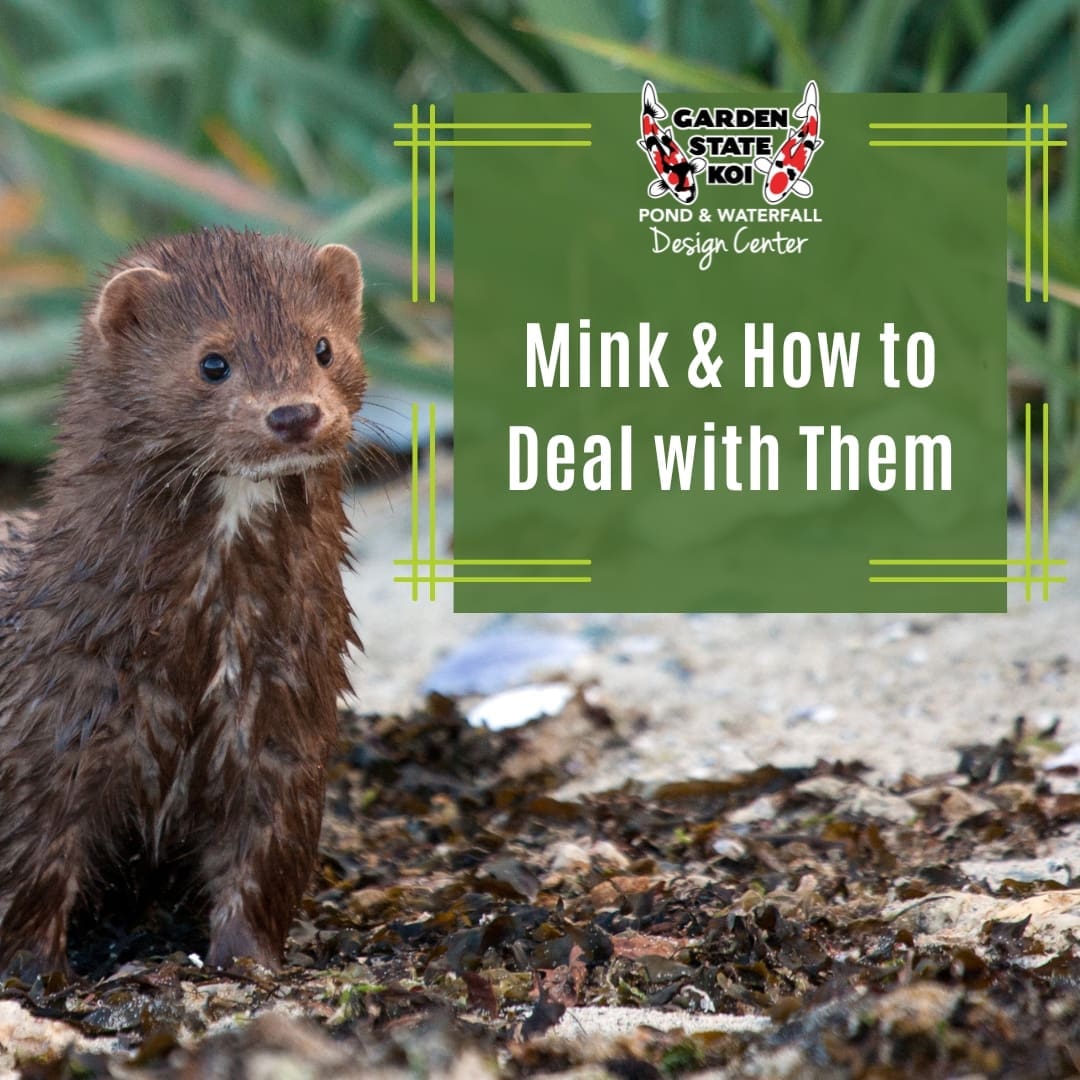Mink Control in your Pond
We often discuss deterring the mink, or the elusive “water wolf,” with our customers in the fall and spring.
Mink have become an increased threat in our area over the last few years. We have even lost some fish to mink at Garden State Koi in the colder months.
In late fall and early spring, most small mammals and amphibians begin to hibernate and in doing so, there are limited food sources for the local mink population. Our fish are either coming out of or getting ready for winter’s slumber and their bodies are near dormant, making them perfect prey for the mink.
Unfortunately for us, winter temperatures allow mink to store fish they have caught for long periods of time. To make their lives easier, mink will simply catch your fish one at a time and store them in a nearby den to feed on over winter. Thankfully, mink have many more prey items that are much easier to catch than our fish in the warmer seasons, so this predatory cycle typically occurs during the colder months (late-fall to early-spring).
How can a Mink do this?
Mink and muskrats are extremely good hunters, swimmers, and very agile. They will slide under most nets, over-or-under an electric fence, and right into the hole in your ice. Mink also have great vision, allowing them to see our slow moving fish at the bottom of the pond. Having thin ice or no ice on the surface makes it easy for mink to get in and out of the water, and mink have insulated fur that keeps them warm in the water. Nothing will keep a mink out of your pond.
Once they find a food source, they don’t stop taking from that food source until it’s dried up. That means every single fish is at risk, and the mink doesn’t care how big or small those fish happen to be. They come for one fish at a time, dragging it out of the hole in the ice and bringing it back to their den. A mink will often ravage an entire pond within 24 hours, and there will be nothing left.
What can you do to prevent the Mink attack?
Many of our customers have had run-ins with the water wolf at this point and we have been learning how to deter them. We have had two things work successfully.
- Dye the pond! Get yourself some black pond dye and dye the pond once a month. It sounds ridiculous and you’re probably wondering “How is this going to help?”
It helps by making the pond dark, which inhibits the mink or muskrat from seeing the fish. It must be done once a month during the winter as the dye dissipates over time. This does not guarantee a mink won’t get your fish, but we have had amazing success deterring the mink just by adding dye to the pond.
We have begun adding these dye treatments to our fall and winter service to make it easier for you in fighting these fiends. Our maintenance manager and resident mink expert, Tommy, is well equipped to dye your pond dark enough you won’t even believe it’s temporary. In the spring, you can dilute out extra dye with regular partial water changes to bring your pond back to its original color.
- Pinned or rocked netting. Although mink can make it through any netting, pinning, staking, and rocking tight netting every 5 inches may deter them from trying to enter a pond. The netting must be a heavy grade so that it can be pulled tight and cannot be chewed through easily. With the pins and rocks so close together, the mink usually can’t get under the net.
These preventative measures are key to combating pesky mink, so be sure to implement them BEFORE mink become a problem for your pond. If you’re struggling to protect your fish from mink, contact us today to see how we can help!

